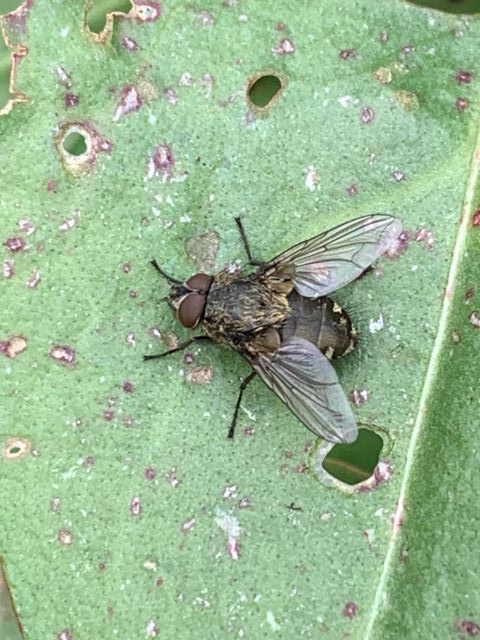Pollenia rudis
Clusterflies are usually associated with open areas and woodlands. However they are more familiar to many people when the weather turns cold and they congregate (cluster) together in tree cavities, rock cracks and more often than some people would like, homes and other buildings. Especially it seems attics. They are common, widespread and often abundant. Yet despite this, our visitor below recorded on Sunday 17th March, was our first record of this species. It has possibly been overlooked or mistaken for similar looking species.

The larva of Pollenia rudis parasitise earthworms. According to online sources, the female fly deposits her eggs close to earthworm burrows, where upon hatching the larva penetrate the soft tissues, feeding until ready to pupate. The adults are usually herbivorous.
They are native to Europe and have been introduced to other parts of the world where they are often considered a pest, such as in North America.
We believe the name Pollenia refers to the golden hairs on the thorax, which are lost over time, but do indeed resemble an insect that has been collecting pollen.
DC-20.03.2024